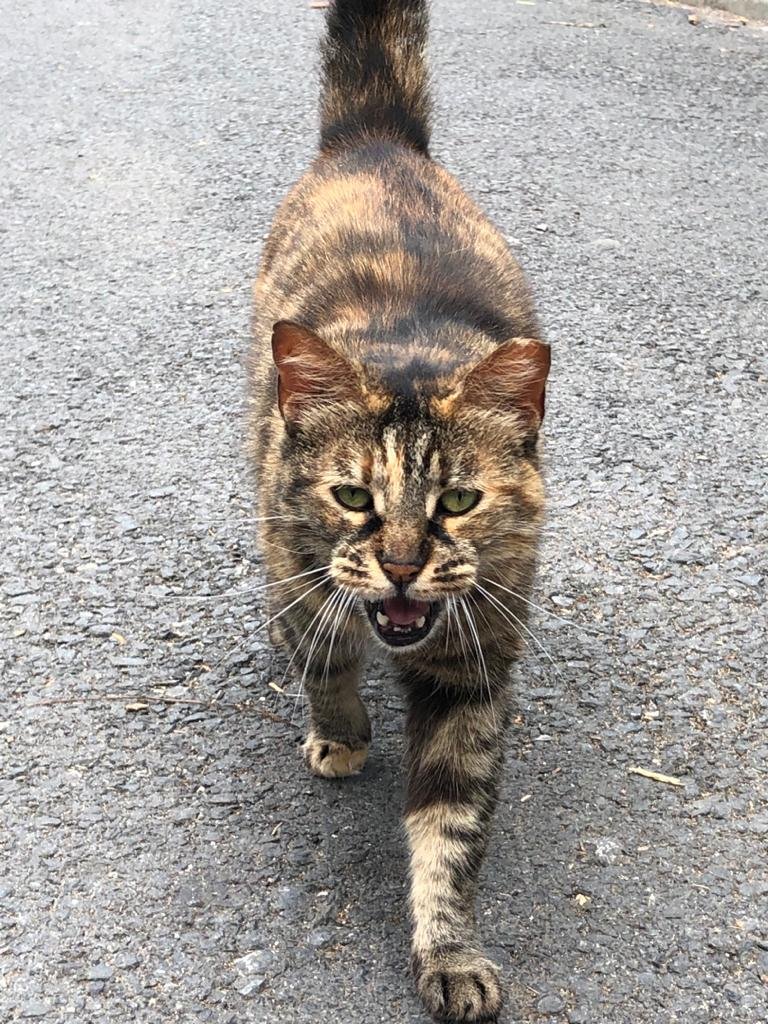Have you ever watched your calm, purring cat suddenly transform into a whirlwind of claws and teeth? One moment, your feline friend is basking in your affection, and the next, they’re swatting at you or bolting out of the room. It’s shocking, sometimes even a little heartbreaking. If you’ve ever wondered what’s going on inside your cat’s mind, you’re not alone. Emotional overstimulation in cats is a fascinating and often misunderstood topic, filled with surprising twists and turns that can leave even the most devoted cat owners feeling puzzled. Let’s take a deep, heartfelt look into what really happens when cats feel emotionally overstimulated.
The Sensitive Nature of Felines
Cats are incredibly sensitive creatures, both physically and emotionally. Unlike dogs, who may often thrive on constant attention, cats can be easily overwhelmed by too much stimulation. Their heightened senses mean they pick up on the smallest changes in their environment or your mood. Imagine trying to relax in a room with flashing lights and loud noises—that’s what overstimulation can feel like to a cat. Even gentle petting or a sudden movement can trigger their nerves. It’s important to remember this sensitivity is part of what makes cats unique, but it also means they need their boundaries respected.
Understanding Overstimulation in Cats
Overstimulation happens when a cat’s nerves are pushed past their comfort zone. This can occur from petting, loud noises, or even too many people in the room. What might seem like normal interaction to us can quickly become too much for a cat. Their tolerance varies from one cat to another; some may enjoy long cuddle sessions, while others prefer brief interactions. When the threshold is crossed, their brains flood with stress hormones. This shift can turn a loving moment into a tense or even aggressive one in an instant.
Common Triggers of Emotional Overstimulation

There are many triggers that can emotionally overstimulate a cat. Petting is one of the most common—especially if you stroke sensitive areas like the belly or base of the tail. Other triggers include loud music, sudden visitors, or even the presence of other animals. Repetitive movements or being held for too long can increase their stress level. Sometimes, a change in routine, such as moving furniture, can also play a role. These triggers are often subtle, but to a cat, they can feel intense and overwhelming.
Early Warning Signs to Watch For
Cats rarely go from calm to overstimulated without warning. They give off subtle signals that they’re reaching their limit. Watch for twitching tails, flattened ears, or dilated pupils. Some cats will start to flick their skin or shift their body position restlessly. Quick head turns to look at your hand is another classic sign. Recognizing these early cues can help prevent a meltdown. It’s almost like a traffic light—when you see the yellow light, it’s time to slow down before things turn red.
The Sudden Switch: From Calm to Chaos

One of the most confusing aspects of feline overstimulation is the sudden shift in behavior. A cat may be purring happily one moment, then suddenly lash out with a bite or scratch. This isn’t because they’re mean or unpredictable; it’s a reflexive response to feeling overwhelmed. Their body is telling them to defend themselves, even if you’re not a threat. This switch can feel like a betrayal for pet owners, but it’s simply a cat’s way of communicating, “I’ve had enough.”
Physical Reactions to Overstimulation

When overstimulated, a cat’s body language becomes tense. Their fur may stand on end (piloerection), and their muscles tighten. Some cats might hiss or growl as a warning. You might see their eyes widen or their breathing become faster. In extreme cases, they might run away and hide or even lose control of their bladder. These physical signs are their way of coping with the flood of emotions and stress hormones surging through their bodies.
Emotional Effects on Your Cat

The emotional toll of overstimulation on a cat can be significant. They might become anxious or fearful, especially if their boundaries are repeatedly ignored. Over time, a cat may start to avoid interactions altogether, losing trust in their favorite humans. The stress can linger, causing them to hide more often or act out with destructive behaviors. An emotionally overstimulated cat may also become less playful or more irritable. It’s a heartbreaking shift for owners who just want to show affection.
Why Some Cats Are More Prone Than Others

Just like people, some cats are naturally more sensitive than others. Breed, age, past experiences, and even health can play a role. For example, older cats or those with a history of trauma may have a lower threshold for stimulation. Highly intelligent breeds like Siamese or Bengals can be particularly prone to emotional highs and lows. Cats who haven’t been socialized properly as kittens may also react more strongly. Understanding your cat’s individual temperament is key to preventing overstimulation.
Petting-Induced Aggression Explained

One of the most puzzling behaviors linked to overstimulation is petting-induced aggression. This is when a cat suddenly bites or scratches during a seemingly pleasant petting session. It’s not about anger—it’s about sensory overload. The repetitive motion of petting can become irritating, like being tickled for too long. Once their threshold is reached, their reaction can seem dramatic. It’s important to learn your cat’s preferences and stop before they reach their breaking point.
The Role of Environment in Emotional Health

A cat’s environment greatly affects their emotional well-being. Overstimulating surroundings—like a noisy household or lack of personal space—can make a cat more prone to emotional overload. Providing quiet spaces and high perches allows your cat to retreat when needed. Enrichment, such as toys and scratching posts, helps them release energy in healthy ways. A calm and predictable environment can prevent many overstimulation issues before they start.
How to Calm an Overstimulated Cat
If your cat becomes overstimulated, the best thing you can do is give them space. Avoid trying to comfort them with more petting—that usually makes things worse. Speak softly and let them retreat to a safe spot. Sometimes, it helps to distract them with a toy or treat, but respect their need for solitude. Over time, you’ll learn how to recognize and respect their limits, making these episodes less frequent. Patience is key; forcing interaction only increases stress.
The Importance of Routine and Predictability
Cats thrive on routine. Changes in their daily patterns can lead to anxiety and overstimulation. Feeding, playtime, and even cleaning the litter box should be done on a predictable schedule. This helps your cat feel secure and in control of their environment. Surprises or sudden changes can cause emotional spikes. The more stable their world, the less likely they are to feel overwhelmed by everyday events.
Play and Positive Outlets for Energy

Providing healthy outlets for your cat’s energy can reduce the chances of overstimulation. Interactive play sessions help burn off excess energy and satisfy their hunting instincts. Toys that mimic prey, like wands or laser pointers, are excellent choices. Rotating toys keeps things fresh and exciting. Regular play also helps build trust and strengthen your bond, making your cat less likely to become emotionally overloaded from boredom or frustration.
The Power of Safe Spaces
Every cat needs a safe space to retreat when they’re feeling overwhelmed. This could be a cozy bed, a quiet room, or a high perch where they can observe without being bothered. Respect their safe zones and never force interaction when they’re hiding. These spaces act as emotional recharge stations, allowing your cat to recover from stressful or overstimulating experiences. A cat who feels safe will be happier and more confident overall.
When Overstimulation Leads to Aggression
Sometimes, overstimulation can result in aggressive outbursts. This might include biting, scratching, or even attacking other pets. It’s important not to punish your cat for these reactions—they’re not being “bad,” just overwhelmed. Instead, focus on prevention and understanding what triggers these episodes. Over time, with patience and gentle handling, most cats can learn to better manage their reactions. Remember, aggression is often a last resort for a stressed cat.
The Link Between Overstimulation and Stress-Related Illnesses

Chronic overstimulation can take a toll on a cat’s health. Stress has been linked to a variety of feline illnesses, including urinary problems, digestive issues, and even skin conditions. If a cat feels emotionally overwhelmed on a regular basis, their immune system can weaken, making them more susceptible to disease. Reducing stress and overstimulation is not just about behavior—it’s about protecting your cat’s overall health and longevity.
How to Rebuild Trust After an Episode
After a cat lashes out due to overstimulation, both you and your pet might feel shaken. It’s important to rebuild trust slowly and gently. Give your cat time to calm down, and avoid forcing interaction. Offer treats or playtime when they’re relaxed. Speak softly and move slowly around them. Over time, your cat will learn that you respect their limits, and their trust in you will grow stronger than before.
Caring for Highly Sensitive Cats

Some cats are simply more sensitive by nature, needing extra care to prevent emotional overload. These cats may thrive in quieter homes with minimal chaos. Gentle handling, soft voices, and predictable routines make a big difference. Avoid rough play or loud noises, and respect their need for personal space. With the right care, even the most sensitive cat can feel secure, happy, and deeply bonded to their humans.
Helping Children Understand Cat Boundaries

If there are kids in your household, teaching them about cat boundaries is crucial. Children may not recognize the signs of overstimulation and can unintentionally overwhelm your cat. Show kids how to read feline body language and explain the importance of gentle, brief interactions. Teach them to stop petting when the cat walks away or shows signs of discomfort. By fostering respect and understanding, you help create a safer and happier environment for everyone.
Seeking Professional Help When Needed
In rare cases, emotional overstimulation can lead to ongoing behavioral problems that are difficult to manage at home. If your cat becomes aggressive or withdrawn, or if you notice changes in eating or bathroom habits, it may be time to consult a veterinarian or feline behaviorist. These professionals can help identify underlying issues and suggest strategies tailored to your cat’s needs. Early intervention can prevent long-term problems and restore peace to your household.
The Joy of Understanding Your Cat
Learning to recognize and respect your cat’s emotional limits is one of the most rewarding parts of being a cat owner. It deepens the bond between you and your pet, leading to a relationship built on trust and understanding. When you see the world through your cat’s eyes, you’ll be amazed at how much better your interactions become. The joy of a relaxed, happy cat is unmatched. Isn’t it incredible how much our feline friends can teach us about patience, empathy, and love?
Hi, I’m Bola, a passionate writer and creative strategist with a knack for crafting compelling content that educates, inspires, and connects. Over the years, I’ve honed my skills across various writing fields, including content creation, copywriting, online course development, and video scriptwriting.
When I’m not at my desk, you’ll find me exploring new ideas, reading books, or brainstorming creative ways to solve challenges. I believe that words have the power to transform, and I’m here to help you leverage that power for success.
Thanks for stopping by, Keep coming to this website to checkout new articles form me. You’d always love it!





